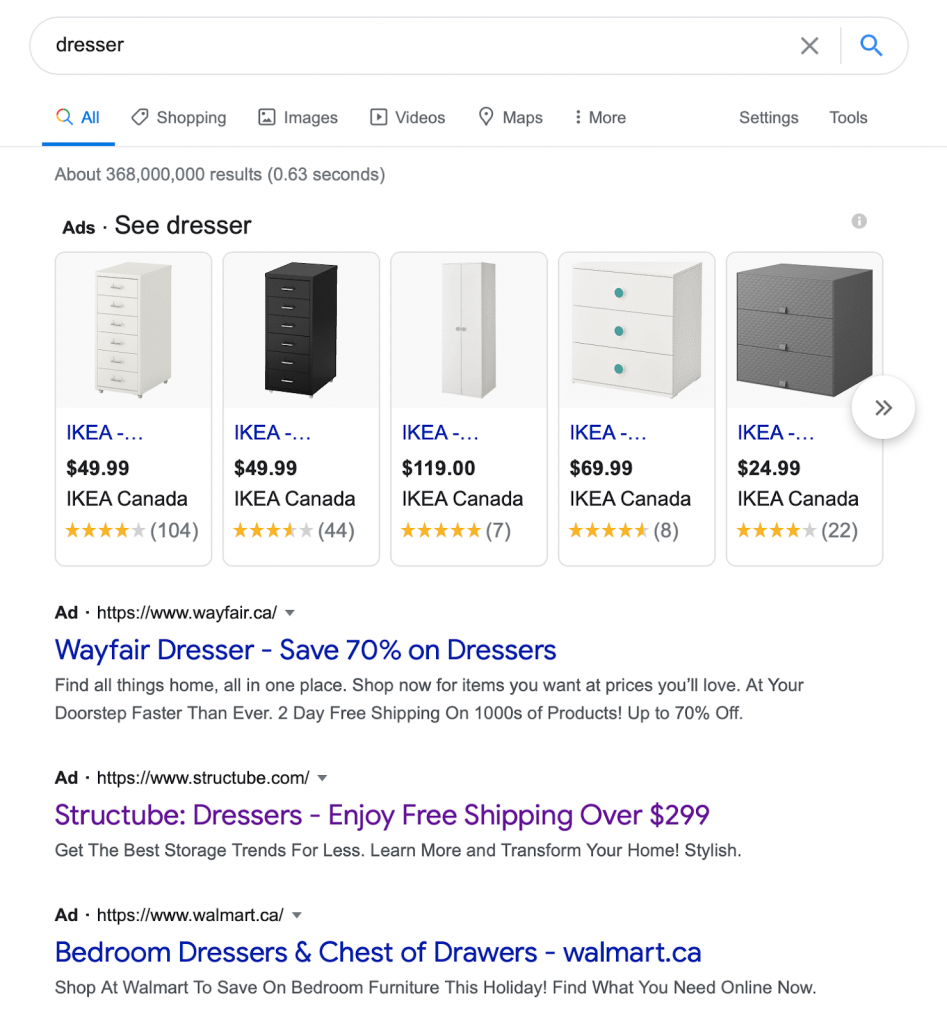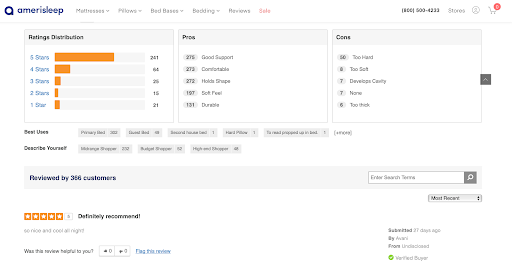
10 Common ecommerce SEO mistakes: The definitive guide
With the rise of ecommerce stores over the last few years, consumers have started using search as a critical tool to research products before buying. In 2019, Google reported that a whopping 84% of Americans are shopping at any given time and in up to six categories.
Search is where most of your customers will look for you. If you are not showing up in search listings, how will they find you?
According to an SEO expert like Damon Burton, you have to establish credibility somewhere and then scale that to the next comparable term or parallel market and take that reputation and leverage it to broaden even further. That way you can balance your reputation with quality content to really improve your rankings!
Sure, you can reach people through other channels, but the majority start googling for products. That’s why you need to prioritize your ecommerce SEO, find out here all the details! Contact a professional ecommerce seo marketing services for expert help!
Why SEO is integral to ecommerce
The shift to a direct-to-consumer model is making the entire shopping process even more difficult for customers. According to indexsy, it should be your goal to make the customer research process as easy as possible by optimizing your product and category pages for search as an ecommerce store owner.
Why?
Shopping through search is analogous to window shopping offline. Ensuring your products show up in search is like putting up a storefront where people can discover your brand.
There’s a catch, though. Ecommerce SEO is challenging.
Consider this example. A simple short-tail search for ‘dressers’ turns up 368 million results with the top 4 spots reserved by a shopping carousel and 3 text ads followed by an answer snippet, suggested questions, and organic listings. You can check this new blog post with a Guide to Hiring the Right SEO Specialist.
In such a scenario, crafting any winning ecommerce SEO strategy to compete with 368 million other listings is tough.
10 common SEO errors to avoid
1. Not focusing on your audience during keyword research
According to companies similar to 1st On The List, keeping your audience at the center of your keyword research is essential in ecommerce SEO. Many companies forget about their audience because they are too keen to use the words they have in mind. But often those are not the keywords potential customers use to search for those products.
CTR on top results is a significant 28% compared to 2.5% for the tenth listing. If you manage to get the search snippet, you can certainly hit the SEO jackpot!
Let’s take a fun example that was in the news recently.
Assume you sell candles that smell like Harry Styles. It might be a good idea to find what people are looking up about him, because his fans will be the best audience for it.
For instance, are they looking up something along the lines of ‘candles sold by Harry Styles,’ ‘candles that smell like Harry Styles’, or ‘Harry Styles candles’?
Use the “People also ask” section on SERPs to brainstorm new keywords that your target audience actually uses.
Here’s an example SERP from a search for ‘best places to travel’ and notice the ‘People also ask’ section. You could write 4 different articles on those questions alone!
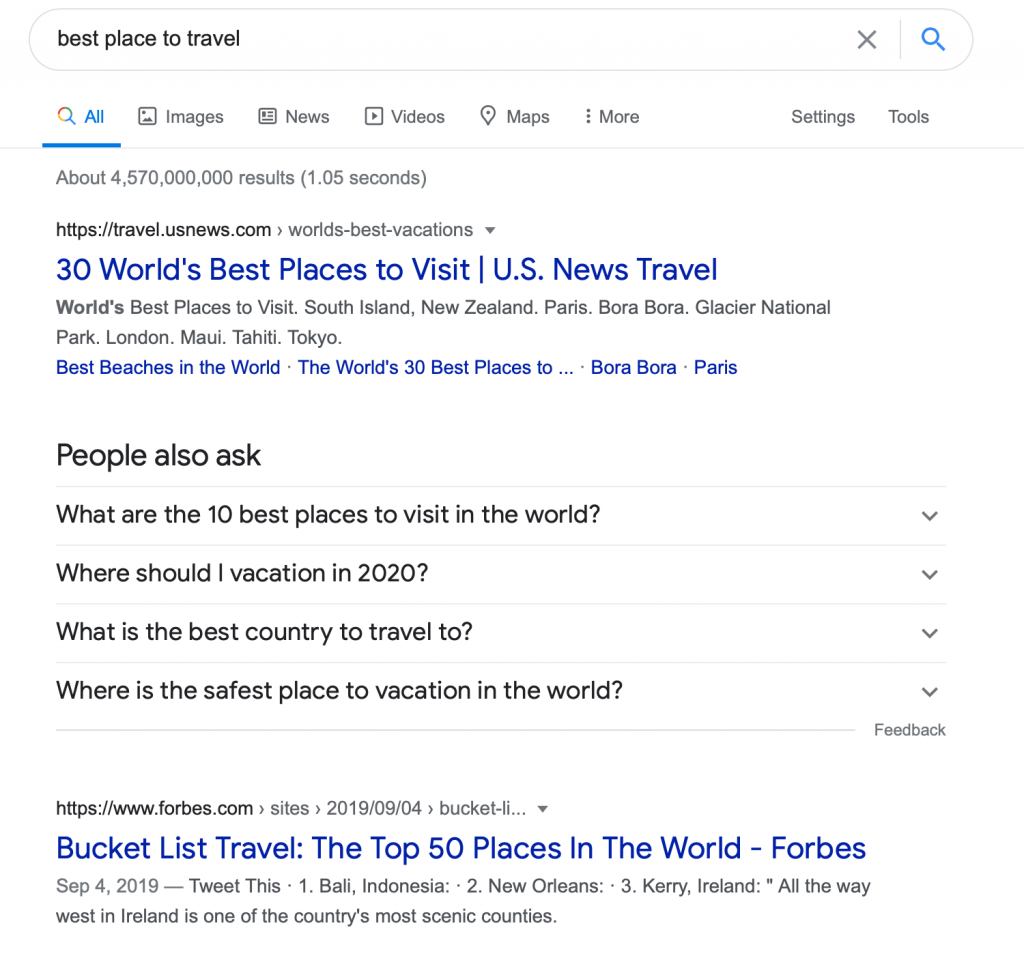
2. Duplicating and spamming your content
Search engines have cracked down on Blackhat SEO tactics such as keyword-stuffing, publishing duplicate content (YouTube still has a long way to go), missing canonicals, inserting hidden text, etc.
These are a fast-track way to get your domain blacklisted. It’s very hard to get a domain up and running after that.
From the consumer’s perspective, it’s simply a bad user experience. If they land on a page for a luxurious winter clothing when they searched for “where to donate winter clothes”, you don’t win anything. They’ll bounce and your ranking will be hurt for the keyword – why do it then?
Now, what do you do when you own the same domain across multiple markets? Do you need to rewrite and paraphrase landing page copy for all markets?
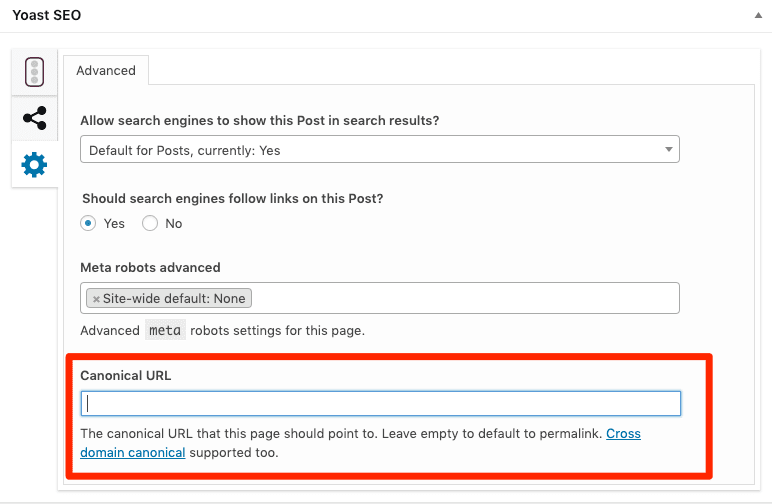
To avoid getting penalized for duplicate content, try the following:
- Specify a canonical URL to signal to search engines which domain takes priority.
- Include keywords, specific to a particular country, city, product name, or a brand to signal that this page is a variant of the original.
- Do not use the same product description for 50 variants of the same product. Switch things up a bit to avoid a penalty for duplicate content.
3. Lacking product reviews and testimonials
In the last few years, there has been an 80% surge in searches for the “best” and “top” product review videos.
Google finds valid reviews and ratings on a website and features them in organic listings. It automatically shows star ratings in SERPs.
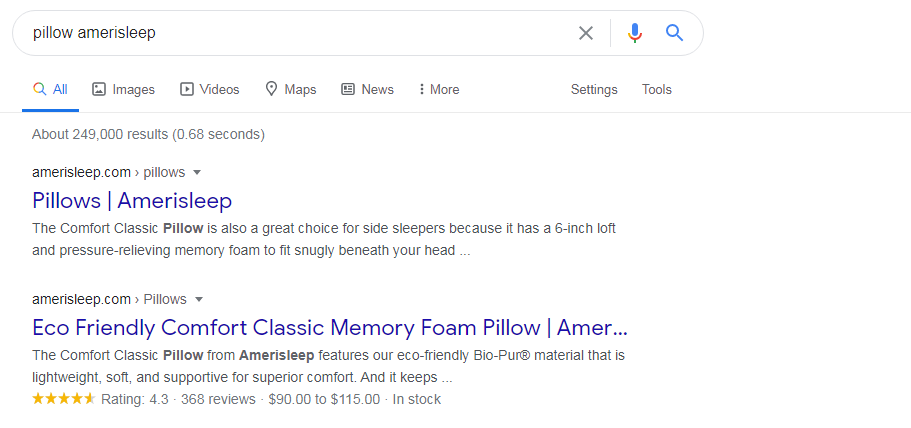
More than helping strengthen brand image and driving qualified leads, reviews make your store stand out among other search results.
Cosmetics, consumer electronics, and furniture shops are huge beneficiaries of this trend. Here’s an example of a mattress brand that has a cleanly laid out review section.
4. Use product descriptions similar to competitors
Retailers and marketplaces do this most often. Copy-pasting the same or similar product descriptions as manufacturers or market leaders tanks your SERP ranking.
For instance, if you are selling a well-known brand of soap sold by 20 other online retailers, all of them likely have the same product description as yours because it was provided by the supplier. This results is in duplicate content that is punished by search engines.
Instead, write new product descriptions or change the existing ones to match your brand voice more closely.
Disclaimer: If you have fast-moving products that sell out quickly and never get restocked, there’s no need to worry too much. Just use a noindex or nofollow tag on those pages. This way, no search equity will be passed onto them, preserving your ecommerce store’s overall search ranking.
5. Lack of product page optimization
Descriptions and alt-text tags are a must for every product page and image. But Open Graph data, publishing dates, version history, geographical tags, and structured markup data are also very important.
Facebook introduced Open Graph in 2010 with the intention of lending more control to website owners on how their content appears when someone shares it.
If you don’t tell search engines how to present your pages’ content, it can appear all wonky in the SERPs.
Here are a few tips to optimize product pages for SEO success:
- Use brand names in the title, H1 headings, alt-text and Open Graph data.
- Make pages easy to navigate by laying out clear breadcrumbs.
- Include image alt-text to optimize for screen readers and other digital accessibility tools.
- Avoid using an iframe tag as it blocks search spiders from crawling content. If you can’t, use robot.txt to index the content within the iframe tag.
6. Optimize image captions
About 62% of GenZ shoppers prefer visual search.
At the most basic level, your online store should have markup that provides detailed information about the products to search engines. Structured markup attracts potential shoppers looking for items via Image search.
Encourage customers to click by adding markup that displays price, availability, color, reviews ratings, etc. right in the search results.
Pro tip: Use various combinations of primary and secondary keywords in product image captions to capture people who are looking for similar items to purchase. My search for a ‘red trench coat’ turned up results for both red trench and regular red coats for men and women.
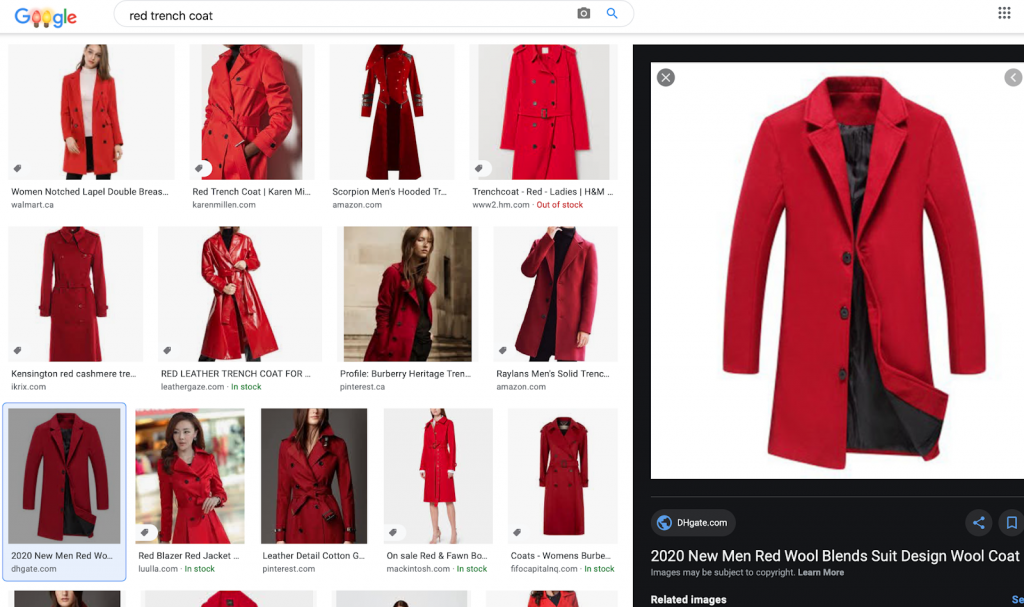
7. Lack of URL optimization
According to top seo services, Keyword placement in URLs is a critical ranking signal. It helps search engines – and customers – understand what the page is about.
While most CMS autogenerate URLs, you should edit it as needed to include the primary and possibly secondary keywords.
Your product page URLs should look clean and descriptive, with a distinctly visible hierarchy between each directory and the final page.
For instance, which one do you think looks better?
Link 1: Digitalshop.com/en-us/womens/pants/blue-polka-dot-pant
or
Link 2: Digitalshop.com/en-us/womens/pants?product=27343tr
Link 2 doesn’t tell you anything about the page. On the other hand, Link 1 can be easily understood and indexed by search engines under accurate product categories and, as a result, ringing up a sale for you.
8. Not using event tracking
Web and shopping analytics platforms like Metrilo provide a pulse check on your ecommerce store’s health and map an entire customer lifecycle, allowing you to understand where your customer retention is suffering.
If you don’t use such a tool, you are leaving money on the table by ignoring data that could give you a more in-depth insight into user behavior. Learning more about it will only help you optimize conversion rates across your best-selling and high-traffic product pages.
A few ideas to get you started on which events to track:
- Leads from email capture forms
- Clicks a particular banner
- Purchase journey to final order placement
- Abandoned carts
- Ebook downloads, blog subscriptions
Note: Metrilo tracks all these and many more events automatically so you can use them all for marketing and optimization.
9. Not using HTML
When search spiders crawl your website, they crawl the HTML part – title tags, alt-text, description, headings, etc.
If you want your own meta title and description to appear in results, then make using HTML tags an ordinary part of your ecommerce SEO strategy.
A frequently used tag – the alt-text tag – is a good example. Don’t stuff it with keywords unless it naturally weaves into the information that needs to be there.
Make sure that images and videos are accessible to people with disabilities, especially those with visual and hearing impairment. In many regions, a website can get sanctioned for not having comprehensible alt text or failing to have it altogether.
Using a static HTML template is a neat workaround to achieve an impressive design without compromising the website’s SEO health.
10. Having a slow site
Page speed is a critical factor in search performance because it gives away the level of usability.
Cool graphics, auto-play videos, and fancy animations – all of these add volume to the content the website needs to download to render fully and, therefore, slow it down.
An excellent practice is to check regularly your site speed in the PageSpeed Insights tool. It will show you which pages have problems and help you solve them.
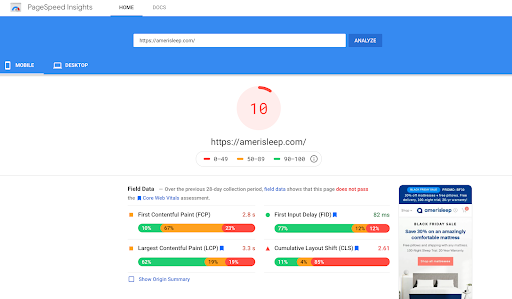
A few elements to assess are:
- Image and video file sizes
- Animation load times
- Image and video resolution
- Mobile vs. desktop page speed comparison
The more elements on a page, the lower the conversion rate, it turns out. Keep it simple and clean. Avoid unnecessary UX clutter in the name of vanity. If your website needs revamping and you need custom website design and digital marketing solutions, you may want to visit the WebEnertia homepage for more info.
11. Fixating too much on ranking
Simply put, ranking number one on SERPs is not the name of the game anymore.
Even a structured keyword plan that targets all relevant product categories will not pay off financially until you align strategy for both on-page and off-page SEO.
Search algorithms are increasingly assigning site speed, navigation, usability, site structure, and content relevancy more weight than keywords.
Conclusion
You can visit the webpage of Move Ahead Media SEO agency if you want to see a team of experts to help you. Seeking out help from an expert seo agency and creating an SEO strategy for an ecommerce brand is tough, but taking small steps and fixing the issues one by one can also get you there. The good news is that every effort counts towards your ecommerce store’s SEO health.
Build and grow your ecommerce brand
Metrilo’s mission is to help you build your ecommerce brand and win your place in the customer’s heart. We share what we learn from our daily work with product innovators and founders here. Subscribe to our weekly newsletter to get the freshest lessons and conquer your niche.
We promise, no spam.
Thank you for subscribing!
See you soon :-)
